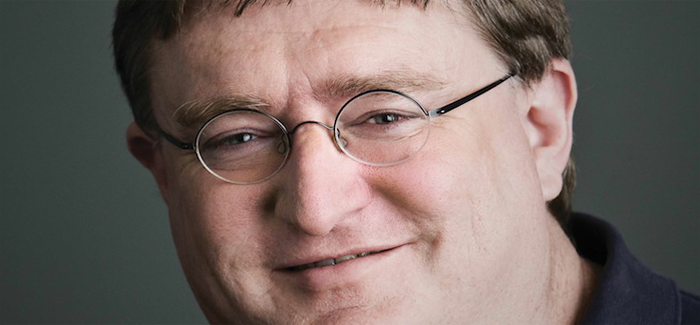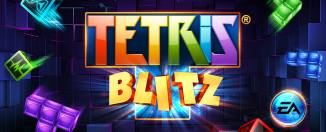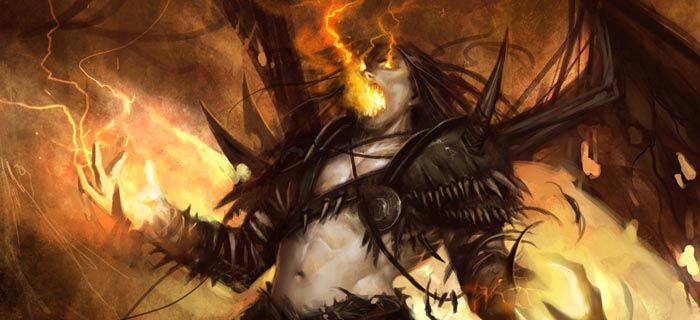Five letter industry: G.A.B.E.N.
I’ll leave all the meme jokes to the funny ones, since what I want to talk about here is no laughing matter, at least to me. The video game industry is transforming, but not in the way it used to. Back in its infancy, the popularity of a game, and means with which to distribute it, fell to groups of trailblazers who needed always to innovate in their craft. Word of mouth and close, social interaction were key. Then the mid to late nineties happened, and companies like Funcoland, EBGames, Blockbuster, and any number of mom and pop stores started acting as hubs for gamers to pick up and sometimes share their experiences. Queue the Dot-Com boom of the early 2000’s, with its rapid expansion of not only information but also its explosion of start-up companies hoping to make it big in this new landscape. Hundreds failed, but companies with real vision and the will to make them possible survived. A few of those companies now reign supreme in the industry landscape. I’m sure you’ve heard of some of them: Activision, Electronic Arts, and Valve Software. Of the three, none has failed to become a giant in their own sector of the industry. Of the three, only one succeeded in resisting the will of true big-business: Valve. I attribute this denial to one man, the managing director and co-founder of Valve, Gabe Newell.
A difference in approach
Gabe owns the PC gaming market, or at least that’s how I see it. Steam’s share in that field, last time I checked, was between 70 and 75%. Services like Origin, Direct2Drive, OnLive and the like are budging in on Valve’s long-time stranglehold on the PC gaming market. As WiNG articulated, that’s not a bad thing. What might be a bad thing is how companies like EA or Activision handle more control in the PC world than they currently do. What makes Gabe different from Kotick or Riccitello is the clarity and openness he shares with his customers.
Do not mistake me here. I’m not saying that he reveals information about his games, because Valve is notorious for playing coy with their user-base, often to the point of infuriation. He does not, however, put his own personal gain ahead of the happiness of his customers. If nothing else, Gabe understands that it is not the dollar sign, but the people holding those signs that matter. Unlike Kotick or Riccitello, who are businessmen first and gamers second, Gabe takes both in stride, understanding the needs of the company and the many gamers it serves as being of equal importance. Sometimes one overrides the other, and he always adjusts in order to stay on top of things.
I’ll talk about how Steam is a lesson to the entire industry in a moment, but I would be a fool to not discuss Gabe’s interactions further. Can any of you remember a time when Bobby Kotick or Jon Riccitello have gone up to an interviewer from a gaming blog, magazine or website and pimped their game with more than just the pre-cast marketing pitch? Can you remember a time when the head guys at DICE or Infinity Ward or Naughty Dog have done so? Pardon my ignorance if they have, but almost every time Valve has a game on the horizon, it never fails that Gabe is the first person people turn to for information. And not only that, the conversations that ensue are, half the time, not even about the game itself, or at least not about mechanics or story.
Think about the DOTA 2 origins video that gave us the “Uh, hi…” Gabe soundbite. While on the surface the story seems just like a funny anecdote, it serves a much larger purpose. It tells the viewers that the employees at Valve play and love the games they make, market and sell. It tells them the work environment at Valve is a positive one. Most of all, it equalizes the relationship between developer and gamer. The humor and sincerity of the story lets us know that the devs at Valve are real people, real gamers, who are just as deflated as we are when they get stomped in unfamiliar territory. The video, in just twenty-eight seconds, lets the viewers realize all of that, and makes them want to see more of Gabe and inclines them ever so slightly to purchase games from a guy who, for all intents and purposes, is just a larger, rounder, more-bespectacled version of themselves.
A difference in distribution
Before Steam, what did we have? As I remember it, everything boils down to Blockbuster and all the companies that would be consumed by GameStop. If you wanted a PC game, you went to those two places, or Best Buy if selection wasn’t your top priority. You put that floppy disk, then that CD, now that DVD, into your computer and played either until the hard drive exploded or the disk shattered. Before Steam we were bound by those fragile disks and greatly feared that awful thing called “a scratch.” But we didn’t know any better, and so, if a disk became unusable, we sucked it up and bought another one, probably at a somewhat lower price.
Then Valve launched Steam, an at the time imperfect and experimental approach to distribution. Games without disks, we thought. Installed on our hard drives yet stored else where? What a novel idea. Because it was novel, people were curious, and some gave it a shot. Steam’s success was not, however, determined by its selection of titles, nor the prices it offered. It was the update system and disk-less delivery that made it powerful. Managing your library of games was something every gamer had to contend with, and losing the manual with that precious CD-Key was just as bad as breaking the disk. Steam, at least now, alleviates the need for a physical copy of the key, and of course its corresponding game, allowing you to use your shelves for something a little more tasteful, like, I don’t know, books.*
More importantly, however, was the content updates the Steam system allowed. No more did your games require you to go to a site, comb through pages of advertisements, badly organized tabs and lists to find your game and the most current update. With Steam, Valve did all the work for you. So long as you had the client and the developer had accepted Steam as a distribution source, updates took no effort on your part save the spending of time. As the Steam Library grew, something like this became less a feature and more an essential. If Valve thought it prudent to limit update capabilities, the Steam of today would be a mess. But since it allows for updates for each and all of its titles directly from the developer, not only is that annoying console “patch certification time” eliminated, it allows for machine-gun patches, quickly fixing issues that previous patches caused. The enormous TF2 patch history is the best example of machine-gun patching, and I know most TF2 players are thankful for it.
A difference in design
I admit that the above two points are really aimed more at the corporate side of the game industry. We’re gamers here, and the developers we count on to keep us happy can still learn a thing or two from Gabe and his crew. Yahtzee from Zero-Punctuation said it best when he quipped in the Resistance 3 review, “innovation means catching up to Valve.” And while we’ve seen Valve’s game development dwindle to one game every few years, at best, the games they’re best known for still stand as testaments to where the industry needs to go in its development process. I’m not just talking about the stuff all storytelling art forms require. Valve’s characters, imagery and plots are some of the best the industry will ever see. Plus, they consistently put out incredibly high quality levels in each of those categories, not to mention sound design, music and well crafted mechanics. I’m talking about mods.
Valve understands, better than any other developer I can think of, that the modding community is a developer’s most vital resource. Of course, this is a little limiting, since modding console games is a slippery slope at best, given the limited memory and the occasional need to modify hardware. But for PC games, which I know is my own preferred platform, you cannot release any game and jilt the mod community. When I say “cannot,” I don’t mean it in the literal sense, because developers certainly can, it’s just that their game’s success will not be what it could be with mods.
To illustrate my point, let’s look at the game that brought a lot of you here, myself included: Team Fortress 2. The game released with so few maps that it was almost criminal, and so few game modes that reviewers at the time were disappointed. Not enough to rate the game badly, but worried that a lack of content detracted from the appeal of the game. Looking back, I think Valve made one of the best decisions in industry history. What they did with the release of Team Fortress 2 was give their customers, modders especially, a template and basic, balanced mechanics, on which to paint their own vision. Think about it. Control points and CTF. Only four maps to go on. Said in just words, it’s paltry. But with those six items, Valve said to their modding community, always a powerful force,” Here’s the art style, the balance of class and map, a couple of examples of gametypes. We want you to do what you do best, and outdo us. Show us that we are students before the vast sea of masters. Make the game your own. We’ll be there to make sure everything’s still shiny, oiled and ready should it need some minor repairs.”
I think that philosophy came from the days of Quake and Half-Life modding, but never before had it been so elegantly implemented as with TF2. Counter-Strike, itself a mod-child, released officially with a similar modicum of maps and modes. To all the naysayers who claim you need fifty thousand maps and game modes to make a release work, I say “Twelve years of Counter-Strike. One basic game mode. Four or five main guns. One hundred thousand dollar tournaments.” Some might argue that such simplicity won’t fly in today’s market. I say, “Counter-Strike: Global Offensive.” I say, “Portal.”
What do you think? Am I going to far here, or is there so much more to say (what a stupid question)?
*Books. *snort*








Sadly, I disagree with something almost right away: Valve has not resisted the temptations of “true big business”. For starters, what exactly is ‘true’ big business? Who defines that? Secondly, Valve is well known for a different approach in business but is still certainly a large, successful business. The key difference between Valve and other big companies like Activision or EA is that they’re will to explore new and different ideas rather than sticking to the same formula. Contrary to what a lot of fans will say, they ARE all about making money but as I said they just do it in a different way.
I guess I should’ve defined “true big business.” Here’s how I see it. To be “true” big business, you must put the dollar sign before every other items on your agenda. The customer and his satisfaction comes second or third, depending on the business in question. I do not disagree that Valve is all about money. The fact that they’ve put so much effort into Steam instead of games is testament to its ability to generate tons of revenue. If there’s no reason to do anything else, and from where I”m standing I don’t think Valve has much of a reason, why do it?
What I’m trying to claim here is that Valve understands and values their customers as much, or almost as much, as the end of the day profits, and understands that if their customers aren’t happy with what they have to give, their business is bound to fail.
Of course, there’s the Call of Duty argument, and Activision’s reputation for not giving two shits about what their customers think, but being a company several orders of magnitude larger than Valve or Steam, comparing the two is tough.
To clarify, then, because Valve and Steam need to work a little harder to make money, they need to approach that quest from several different angles, most of them novel and not necessarily well developed before.
But again, you’re right when you say that Valve and Steam are businesses, for whom money is one of, if not the, primary goal.
The way Valve decides to make money has never actually bothered me. I think they break even with the player consistantly. I mean, should I really care that a game I bought on a Halloween sale for practically nothing almost two years previously goes F2P (though I could understand the frustration of those who bought it a month or less before)? Is it really that bad that they sell items available in the regular game to people who are less patient? Hell, the most criminal thing they’ve done was to give Portal 2 it’s initial price tag, which should have been 10 or 15 dollars cheaper from how short it was and how little replay value is there, but that’s still hardly anything to really dislike Valve for.
Gabe Newell jokes be damned; the man is a hero as far as I’m concerned. He’s never seemed like anything but a truly nice guy to me. That’s my story, and I’m sticking to it.
For the most part, agreed.
Four maps? There were six, although no one touches Hydro anymore. Poor, poor Hydro.
Well now I feel stupid. Thanks fo that. :< But you're right, and for the next article I write like this, I'll do a little more background research instead of relying on memory.
Great article!
Thanks! I’ll probably write an addendum to clarify some of the points that are a little murky, but I’m real proud of this one.
Gaben is the lawful good guy on game’s business
God dammit. Why did you link to Zero Punctuation? I just watched every single one of those videos and now the sun is coming up/
Apart from this, that was a really good article. I love this website. :)
Everyone needs a little Yahtzee in their life :P